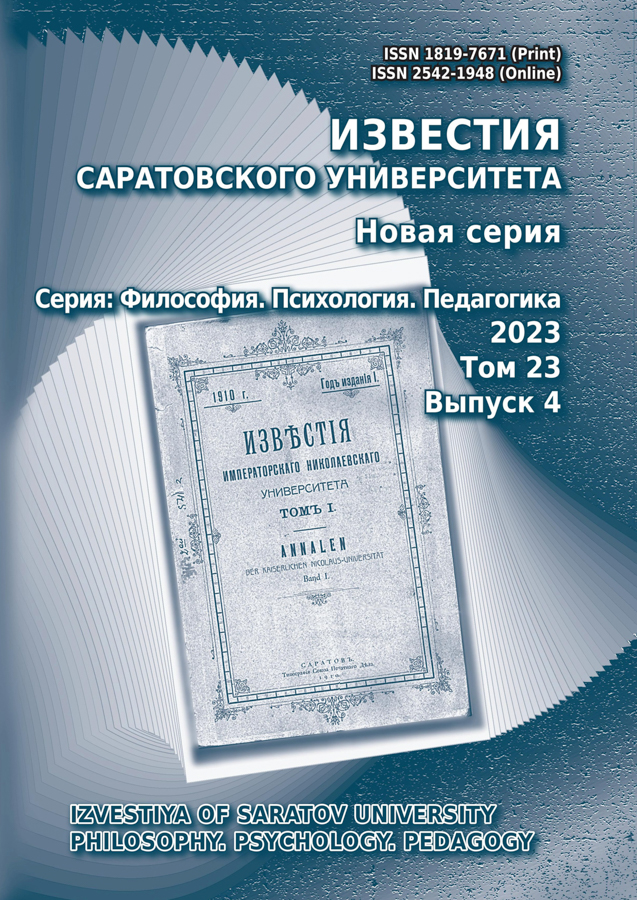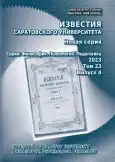Айтрекинговое исследование восприятия художественной народной росписи на примере гжели и хохломы
- Авторы: Зинченко Е.М.1
-
Учреждения:
- Саратовский национальный исследовательский государственный университет имени Н. Г. Чернышевского
- Выпуск: Том 23, № 4 (2023)
- Страницы: 424-430
- Раздел: Статьи
- URL: https://journals.rcsi.science/1819-7671/article/view/251024
- DOI: https://doi.org/10.18500/1819-7671-2023-23-4-424-430
- EDN: https://elibrary.ru/MQNXUQ
- ID: 251024
Цитировать
Полный текст
Аннотация
Ключевые слова
Об авторах
Екатерина Михайловна Зинченко
Саратовский национальный исследовательский государственный университет имени Н. Г. Чернышевского410012, г. Саратов, ул. Астраханская, 83
Список литературы
- Лефман Т. О. Новый дизайн на основе традиционного ремесла: опыт творческих коллабораций // К 150-летию со дня рождения Игоря Эммануиловича Грабаря (1871–1960): сборник статей по итогам Всероссийской научной конференции (Архангельск, 25–26 марта 2021 г.) / под ред. Н. Н. Бедина. Архангельск : КИРА, 2021. С. 268–274.
- Некрасова М. А. Место народного искусства как духовного феномена в современной культуре России // Русская народная линия: информационно-аналитическая служба. URL: http://ruskline.ru/analitika/2009/03/30/mesto_narodnogo_iskusstva_ kak_duhovnogo_fenomena_v_sovremennoj_kul_ture_rossii (дата обращения: 20.08.2023).
- Фалетрова О. М. Регуляция психофизического и психоэмоционального состояния средствами искусства // Гуманитарные науки. 2021. № 1, вып. 53. С. 140–144.
- Чернышева Т. В. Японское искусство икебана как возможность сохранения и восстановления психоэмоционального состояния педагогов, медицинских работников, работающих с детьми с ОВЗ и направление арт-терапии для родителей // Инклюзивное образование: теория и практика: сборник статей по итогам Международной научно-практической конференции (Орехово-Зуево, 17 июня 2021 г.) / под ред. И. А. Ахметшина. Орехово-Зуево : Государственный гуманитарно-технологический университет, 2021. С. 342–348.
- Лоскутова А. В. Арт-терапия, роспись по шелку как возможность улучшения психоэмоционального состояния // Антология российской психотерапии и психологии: сборник статей по итогам Международного конгресса (Москва, 12–15 октября 2017 г.) / под ред. А. Е. Булычевой. М. : Общероссийская общественная организация «Общероссийская профессиональная психотерапевтическая лига», 2017. С. 183–183.
- Treadon C. B., Rosal M., Wylder V. D. T. Opening the doors of art museums for therapeutic processes // The Arts in psychotherapy. 2006. Vol. 33, № 4. P. 288–301. https://doi.org/10.1016/j.aip.2006.03.003
- Rosal M. Cognitive-behavioral art therapy. Approaches to art therapy // Routledge. 2016. P. 333–352. https://doi.org/10.4324/9781315459257
- Rosal M. L. Cognitive-Behavioral Art Therapy: From behaviorism to the third wave. New York : Routledge, 2018. 252 p.
- Durugbo C. M. Eye tracking for work-related visual search: A cognitive task analysis // Ergonomics. 2021. Vol. 64, № 2. P. 225–240. https://doi.org/10.1080/00140139.2020.1822547
- Bachurina V. A machine learning investigation of factors that contribute to predicting cognitive performance: Difficulty level, reaction time and eye-movements // Decision Support Systems. 2022. Vol. 155. P. 113713. https://doi.org/10.1016/j.dss.2021.113713
- Bacica D., Henryb R. Advancing our understanding and assessment of cognitive effort in the cognitive fi t theory and data visualization context: Eye tracking-based approach // Decision Support Systems. 2022. Vol. 163. Р. 1–15. https://doi.org/10.1016/j.dss.2022.113862
- Liu X. Chen T., Xie G., Liu G. Contact-free cognitive load recognition based on eye movement // Agricultural Water Management. 2016. Vol. 172. P. 1–8. https://doi.org/10.1155/2016/1601879
- Skaramagkas V., Ktistakis E., Manousos D., Tachos N. S., Kazantzaki E., Tripoliti E. E., Fotiadis D. I., Tsiknakis M. Cognitive workload level estimation based on eye tracking: A machine learning approach // 2021 IEEE 21st International Conference on Bioinformatics and Bioengineering (BIBE). 2021. P. 1–5. https://doi.ieeecomputersociety.org/10.1109/BIBE52308.2021.9635166
- Zheng T., Glock C. H., Grosse E. H. Opportunities for using eye tracking technology in manufacturing and logistics: Systematic literature review and research agenda // Computers & Industrial Engineering. 2022. Vol. 171. P. 108444. https://doi.org/10.1016/j.cie.2022.108444
Дополнительные файлы










